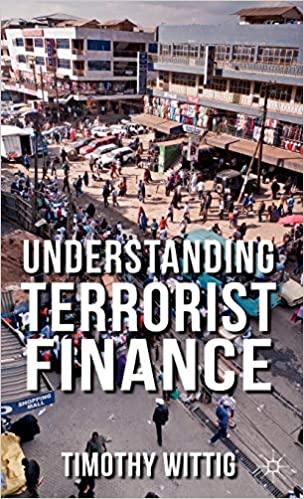Question
1. Banking panics are especially dangerous because: a. they can start easily and spread quickly. b. the banking sector employs about 25% of workers in
1. Banking panics are especially dangerous because:
a. they can start easily and spread quickly.
b. the banking sector employs about 25% of workers in the U.S.
c. the government will respond by seizing all banking assets.
d. they can lead to other panics, such as retail panics.
2. An insolvent institution has:
a. liabilities that exceed its assets.
b. liabilities that exceed its equity.
c. equity that exceeds its liabilities.
d. assets that exceed its liabilities.
3. An illiquid asset is one that is _______ but _______.
a. worth a lot in the future; can only be sold today at a low price
b. worth a lot right now; not worth that much in the future, when it can be sold.
c. worth a lot in the future; can be sold today at its expected future price
d. worth a lot right now; cannot be sold until the future, when its value will be higher
4. Deposit insurance guarantees that:
a. depositors will get their deposits back, unless the bank becomes insolvent.
b. depositors will get their deposits back, unless the bank's assets are illiquid.
c. depositors will get their deposits back, even if the bank is insolvent.
d. depositors will not get their deposits back, unless the bank is solvent and liquid.
5. The Fed acts as lender of last resort:
a. only when an institution is not covered by deposit insurance but deposit insurance would have been enough.
b. when deposit insurance isn't enough or when an institution isn't covered by deposit insurance.
c. for any institution, household, or business, that faces a solvency crisis.
d. only when an institution is covered by deposit insurance but deposit insurance isn't enough.
6. Traditionally, the Fed lends to:
a. solvent but illiquid banks.
b. solvent, liquid banks.
c. insolvent and illiquid banks.
d. insolvent and solvent banks.
7. The problem of moral hazard exists when:
a. agencies like the Fed act based on politics rather than sound economics.
b. the failure of one financial institution can lead to the failure of other institutions.
c. people or institutions who are insured tend to take on too much risk.
d. a bank is solvent but many of its assets are illiquid.
Step by Step Solution
There are 3 Steps involved in it
Step: 1

Get Instant Access to Expert-Tailored Solutions
See step-by-step solutions with expert insights and AI powered tools for academic success
Step: 2

Step: 3

Ace Your Homework with AI
Get the answers you need in no time with our AI-driven, step-by-step assistance
Get Started


